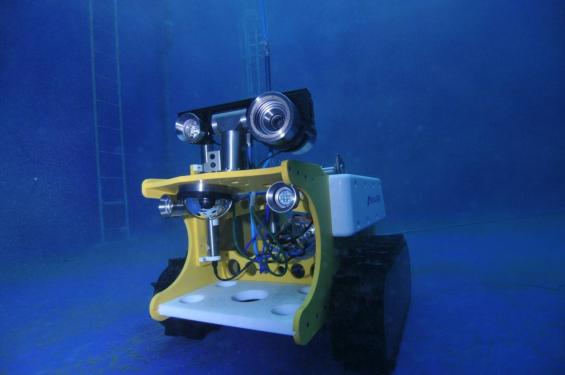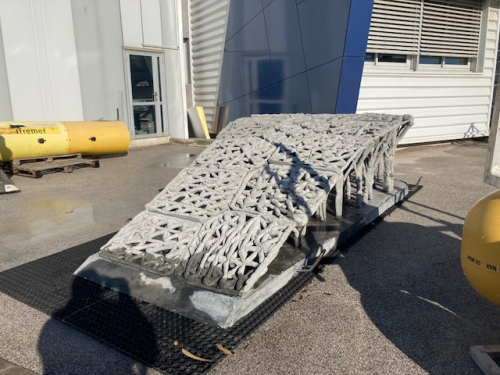Beyond a thousand metres, we are in the deep ocean, rapidly plunged into total darkness.
Little studied, this vast space is the scene of unprecedented phenomena. It is here that organic carbon is transformed into inorganic carbon, setting in motion processes that have an impact on climate change, the details of which we still do not fully understand. How can we quantify these flows in an environment where, as we descend, the temperature decreases and the pressure increases, making it more difficult to take samples? How can we study the bioluminescent organisms that inhabit the deep sea?
The development of the Bathybot rover and its BathyReef docking platform, which will be deployed at a depth of 2,500 metres from 30 January 2022 during the EMSO-LO campaign, will make it possible to study the biological communities living at the bottom of the Mediterranean and the oceanographic physico-chemical parameters (oxygenation, temperature, salinity, etc.). They will complement an instrumented line, called Albatross, deployed along the water column.
The BathyBot benthic underwater robot, developed by the Institut méditerranéen d'océanologie, is equipped with caterpillar tracks to move along the sedimentary bed and is controlled by computer from the coast. It carries probes for real-time measurements and is equipped with two cameras, one of which scans bioluminescence so sensitively that its only illumination is a red light known not to frighten deep-sea organisms.
A 70 m cable linking the rover to its Bathyreef 'docking station' will connect it to the LSPM network for control and data collection.
BathyReef, the result of collaboration between the Institut Méditerranéen d'Océanologie and Lab Rougerie+Tangram, was built by the Vicat group. It forms a ramp and reveals a space large enough for Bathybot to position itself and make observations.
It has been designed in concrete, an inert material that limits its impact on the deep environment, and its shape offers organisms an artificial reef that is easy to colonise.
A scientific junction box (BJS) will enable new instruments to be connected to the observatory. More than a power strip adapted to deep-sea conditions, it is a complex 'intelligent network' that will transmit energy to the instruments and send the data collected to the mainland.
The BJS will be launched first. Only after it has been connected and checked to ensure that it is working properly will the first four instruments be deployed and connected to the BJS. Scientists will then be able to control them from their laboratories and access the environmental data acquired in real time.
You can follow the deployment of Bathybot and Bathyreef in real time on twitter and on the website of the Mediterranean Institute of Oceanology.
Follow the adventures of this extraordinary rover from 30 January. In the meantime, take a look at the extensive press coverage of the project.






